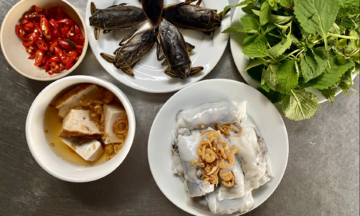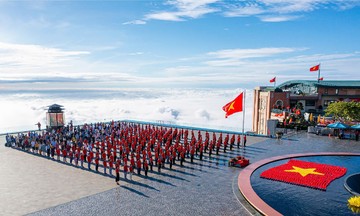"Xu Nau," the affectionate local name for Binh Dinh province (now Gia Lai), is intrinsically linked to the sea, boasting a rich cultural history, diverse cuisine, and unpretentious people. Within Xu Nau lies the coastal city of Quy Nhon, nestled between mountains and the sea, attracting visitors with its curved beaches, clear blue waters, and tranquil atmosphere.
Located 1,065 km from Hanoi and 650 km from Ho Chi Minh City, Quy Nhon is ideal for travelers who appreciate a slower pace of life, close proximity to nature, and authentic local experiences. A two-day, one-night trip is sufficient to enjoy a relaxing vacation in this coastal city.
Day 1:
Traveling to Quy Nhon:
Vietnam Airlines, Vietjet Air, and Bamboo Airways operate flights from Hanoi and Ho Chi Minh City to Quy Nhon, with round-trip tickets starting from 2.5 million VND, depending on the flight time and airline. Phu Cat Airport is about 45 km from the city center, and a taxi ride costs around 165,000 VND. Alternatively, you can reach Quy Nhon by sleeper bus or train from neighboring provinces if you have more time. Within the city, motorbikes are a common mode of transport, with rental prices ranging from 100,000 to 150,000 VND per day.
Checking into your accommodation:
Begin your vacation by checking into your chosen accommodation. For those seeking a private, nature-immersive experience, Anantara Quy Nhon is an excellent option. Located in a secluded area in Ghenh Rang, each villa offers ocean views and a private pool. A highlight is the spa nestled within a tropical forest, facing the sea. Prices for a night's stay range from 15 to 17 million VND.
Budget-conscious travelers can opt for Le Mint, a boutique hotel near Quy Nhon beach, offering convenient access to local cuisine and attractions. Room rates start at 800,000 VND for a double room, including breakfast.
After checking in and having lunch, unwind at one of the spas to relieve any travel fatigue.
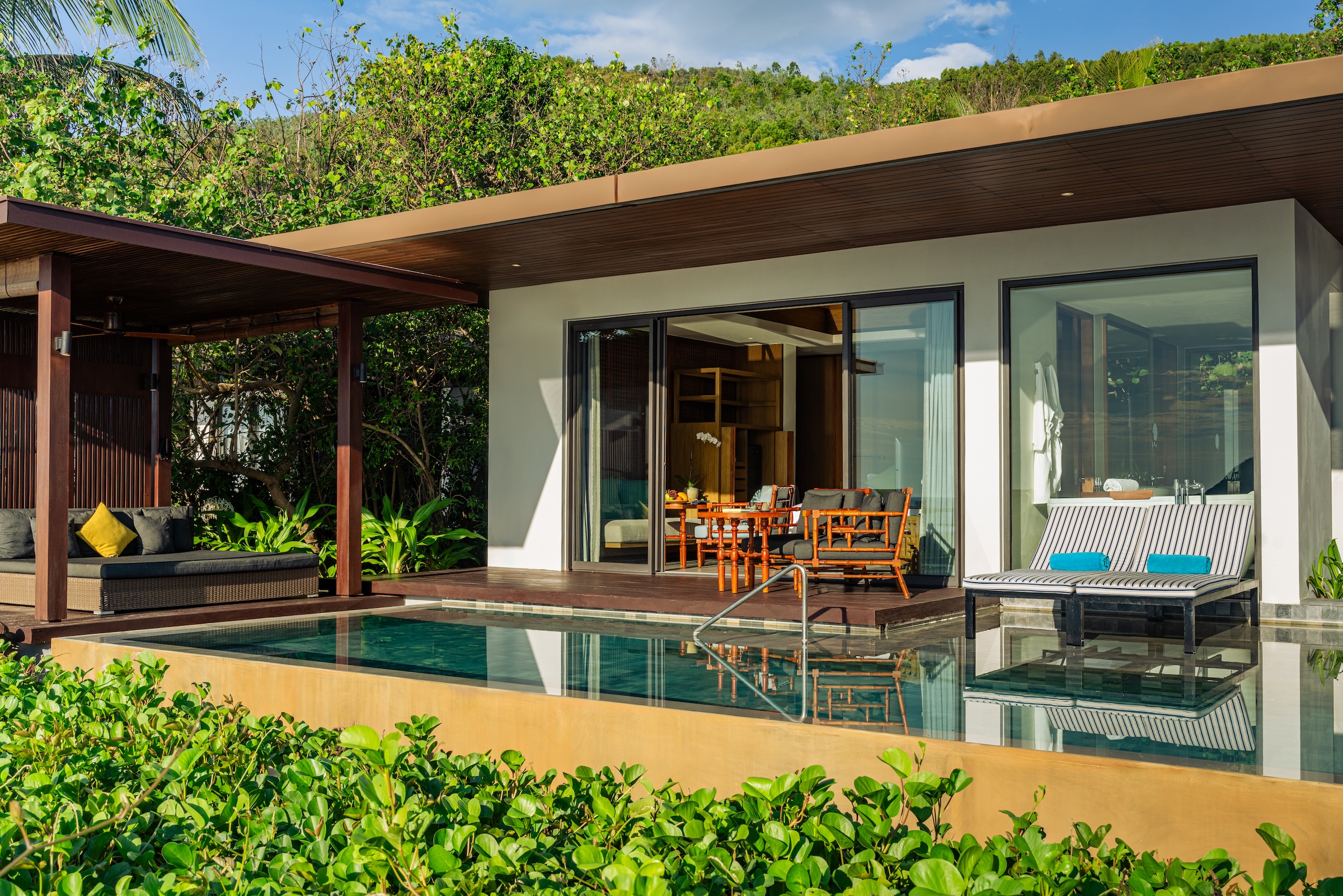 |
Relaxing at a secluded resort in Bai Dai, Ghenh Rang
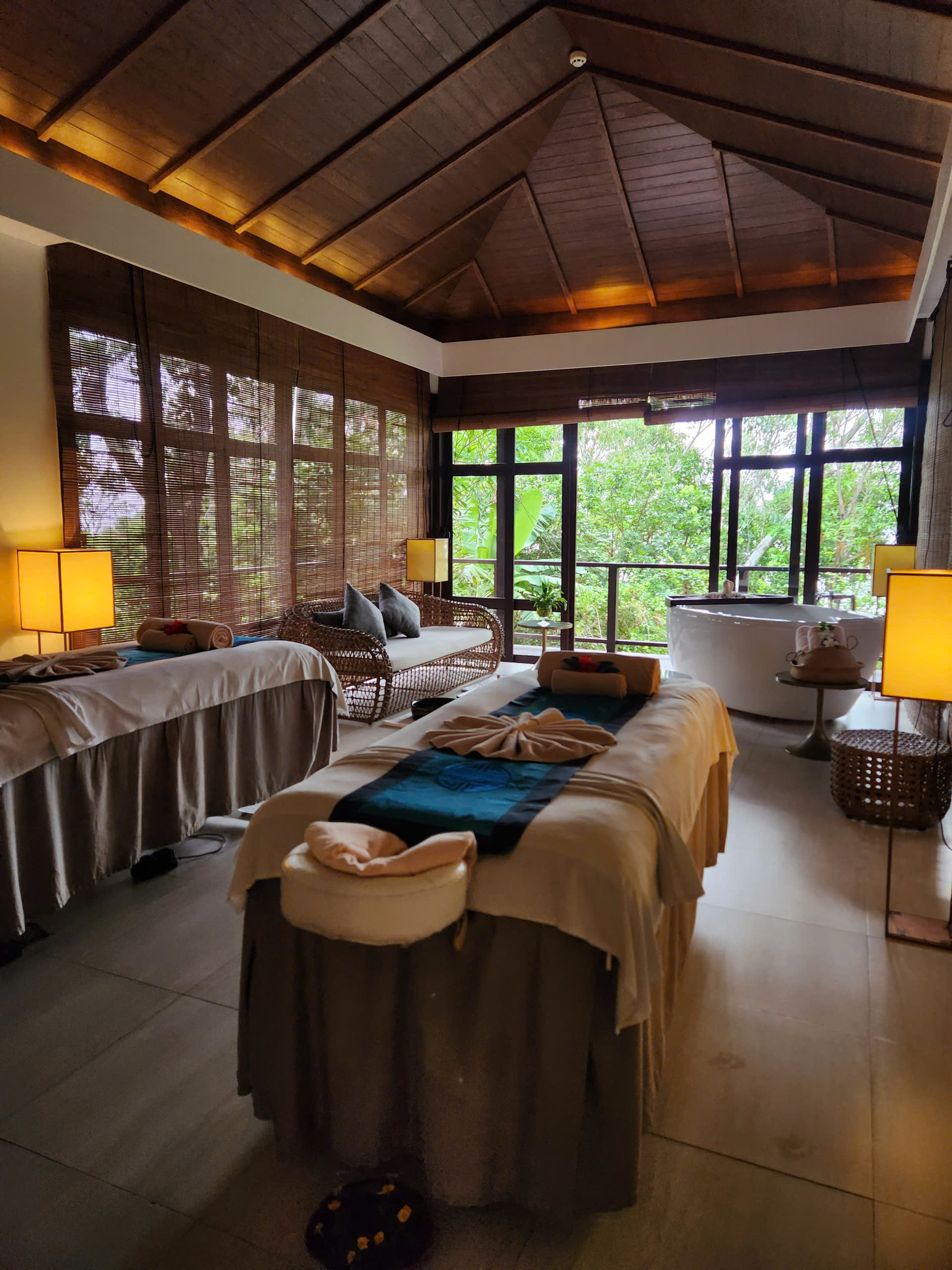 |
Unwinding at a spa hidden in the tropical forest. Photo: Bich Phuong
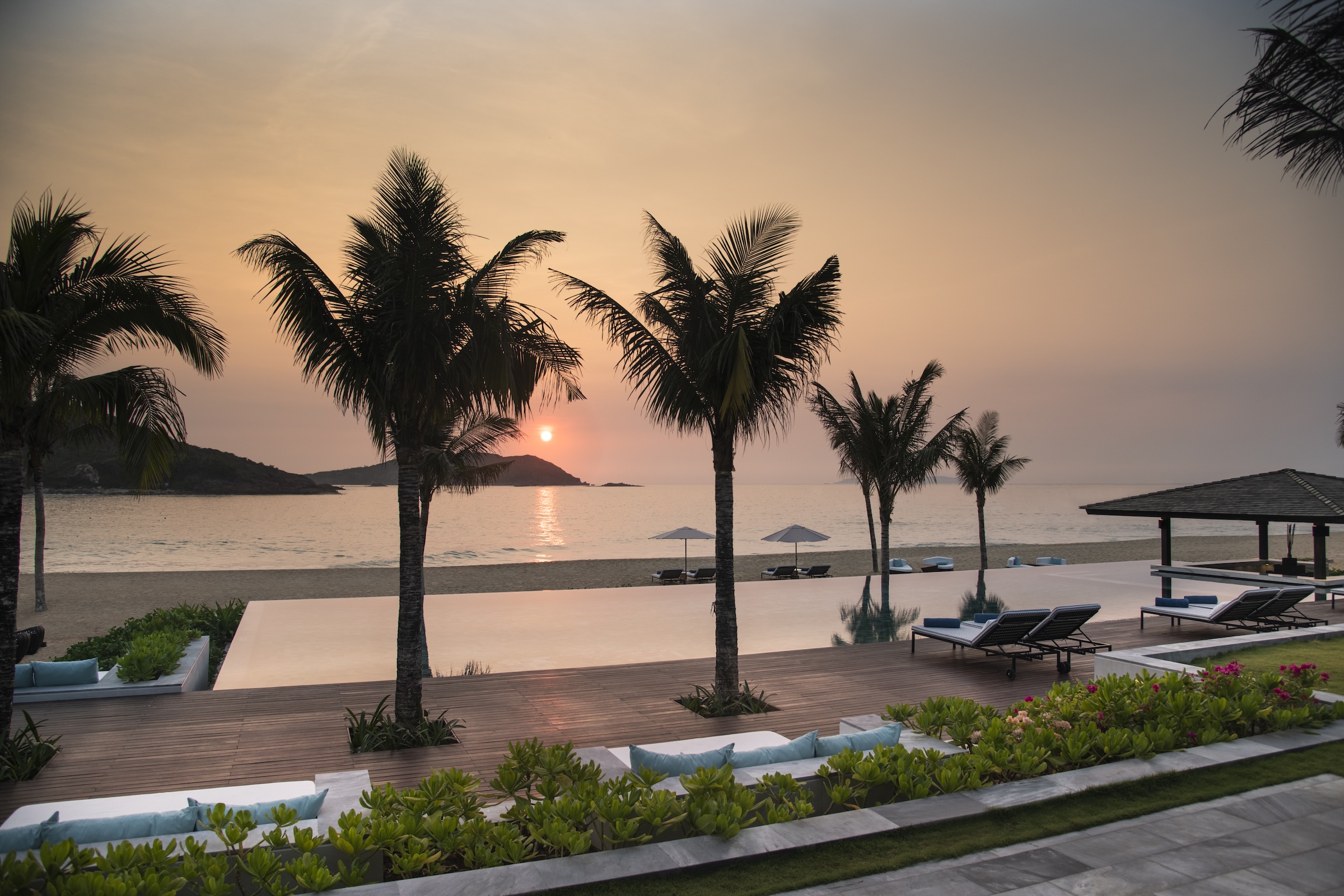 |
Sunset at Bai Dai
Exploring Ghenh Rang:
In the afternoon, visit Ghenh Rang Tien Sa, a popular tourist destination about 3 km from Quy Nhon's center, reachable by motorbike or taxi in about 10 minutes. Situated on the mountainside, it stretches along the hillside overlooking the sea, blending natural beauty with cultural and spiritual significance.
Ghenh Rang includes notable stops such as Bai Da Trung (also known as Queen's Beach), featuring countless round stones resembling dinosaur eggs layered along the shore; and the tomb of Han Mac Tu, a renowned poet of the New Poetry movement, located on a breezy hillside. From here, you can enjoy panoramic views of Quy Nhon Bay, watching boats drift across the horizon and the crescent-shaped coastline in the distance.
The paths in Ghenh Rang primarily consist of stone steps and slopes, ideal for leisurely strolls and sightseeing.
Savoring street food:
Returning to the city center in the late afternoon, stroll along Bach Dang Street, where locals gather to sell local specialties like "banh xeo tom nhay" (jumping shrimp pancakes), fish noodle soup, sweet soups, "tre tron" (fermented pork salad), and fish cakes. These dishes are priced around 10,000-15,000 VND. Try the "tre tron cha nem," a mix of shredded fermented pork (made from pig ears and skin), herbs, mango, spices, fermented sausage, and beef jerky.
Another popular dish is grilled fish cakes wrapped in herbs. The cakes are sliced thinly or into bite-sized pieces, grilled over hot coals to maintain their characteristic chewiness. They are typically eaten with herbs and dipped in chili sauce.
Sample local drinks and desserts like "dau xuong sao" (grass jelly drink), mixed bean sweet soup, and ginseng sweet soup. An evening of street food indulgence costs less than 100,000 VND per person.
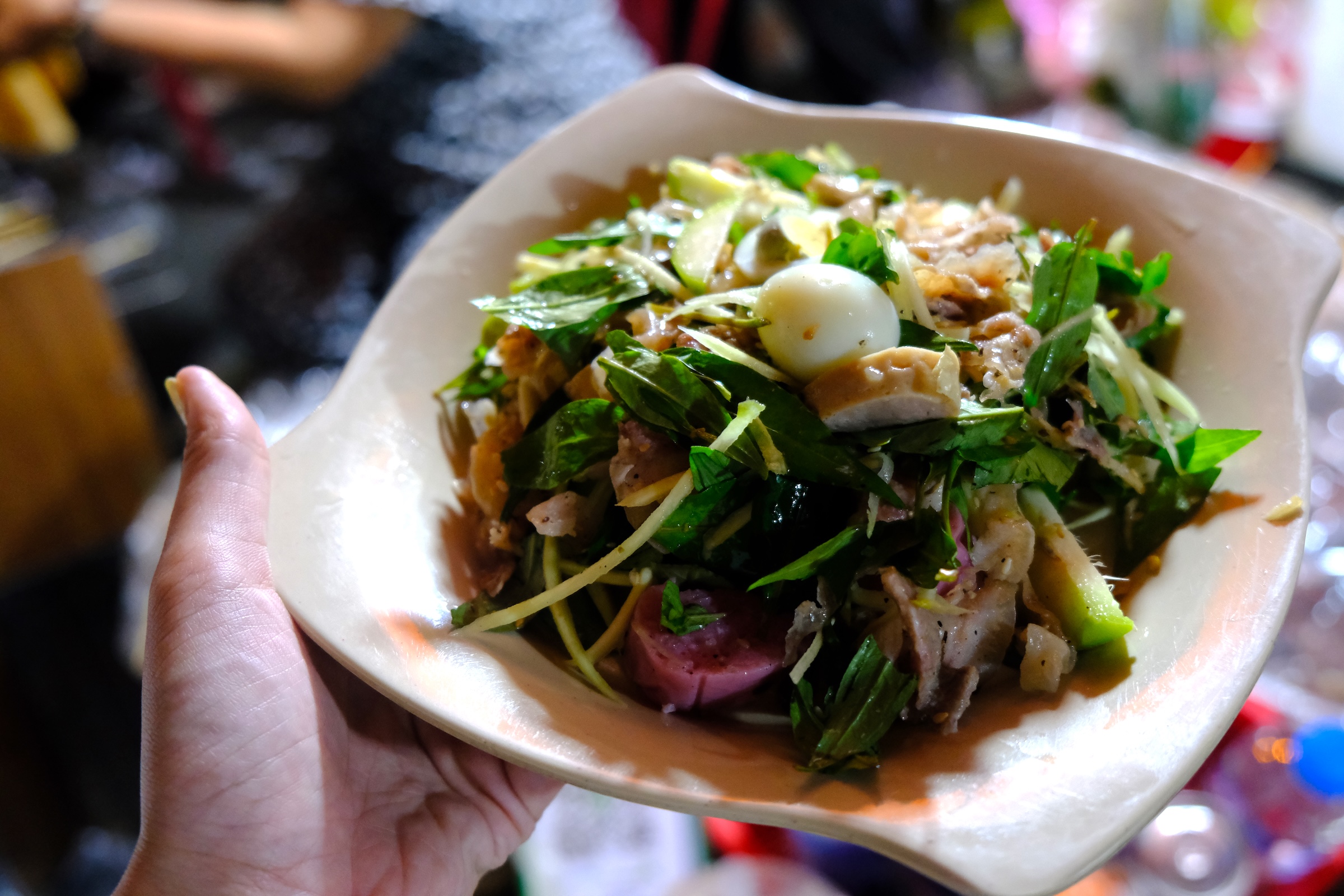 |
Xu Nau's specialty: "tre tron"
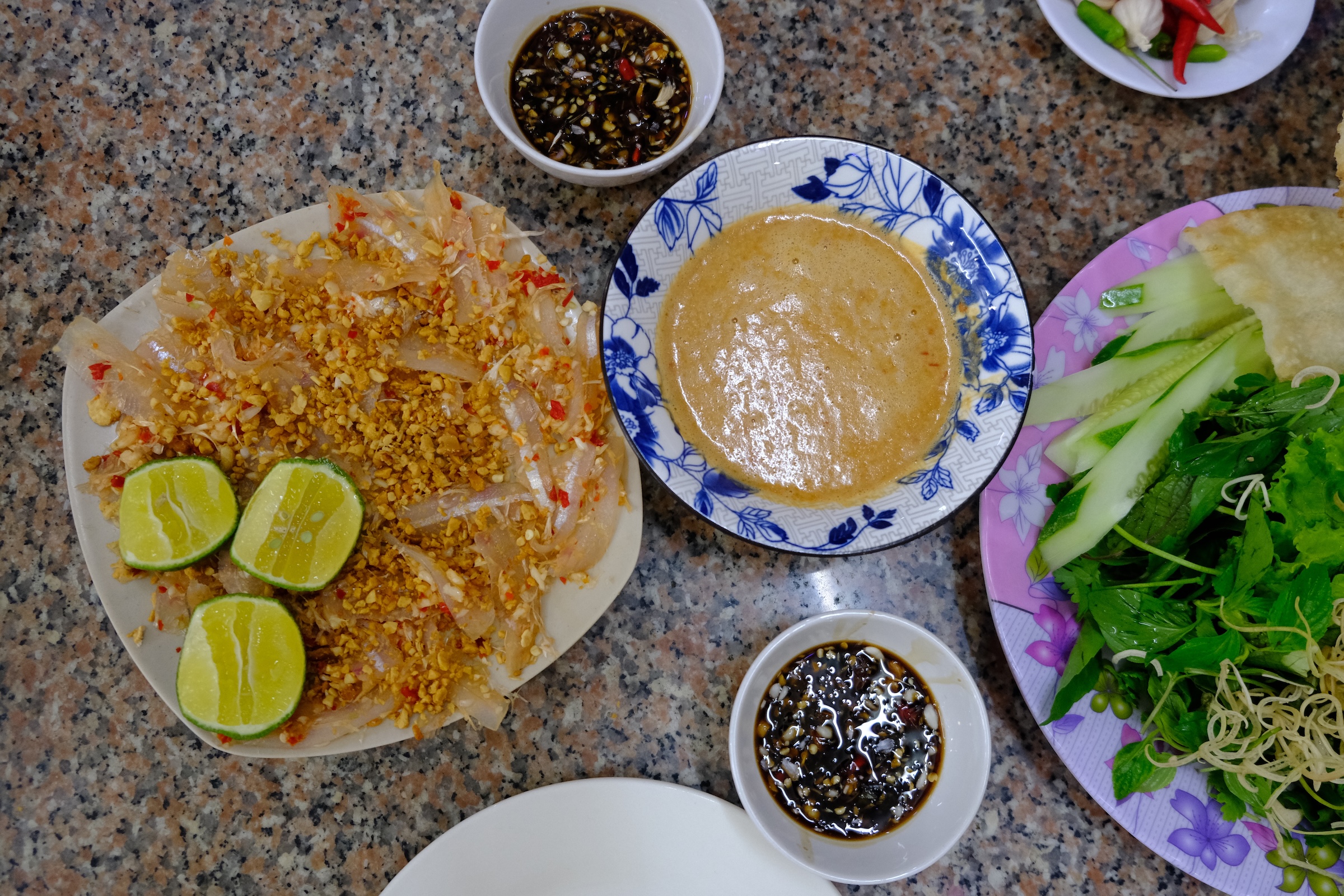 |
Jellyfish salad
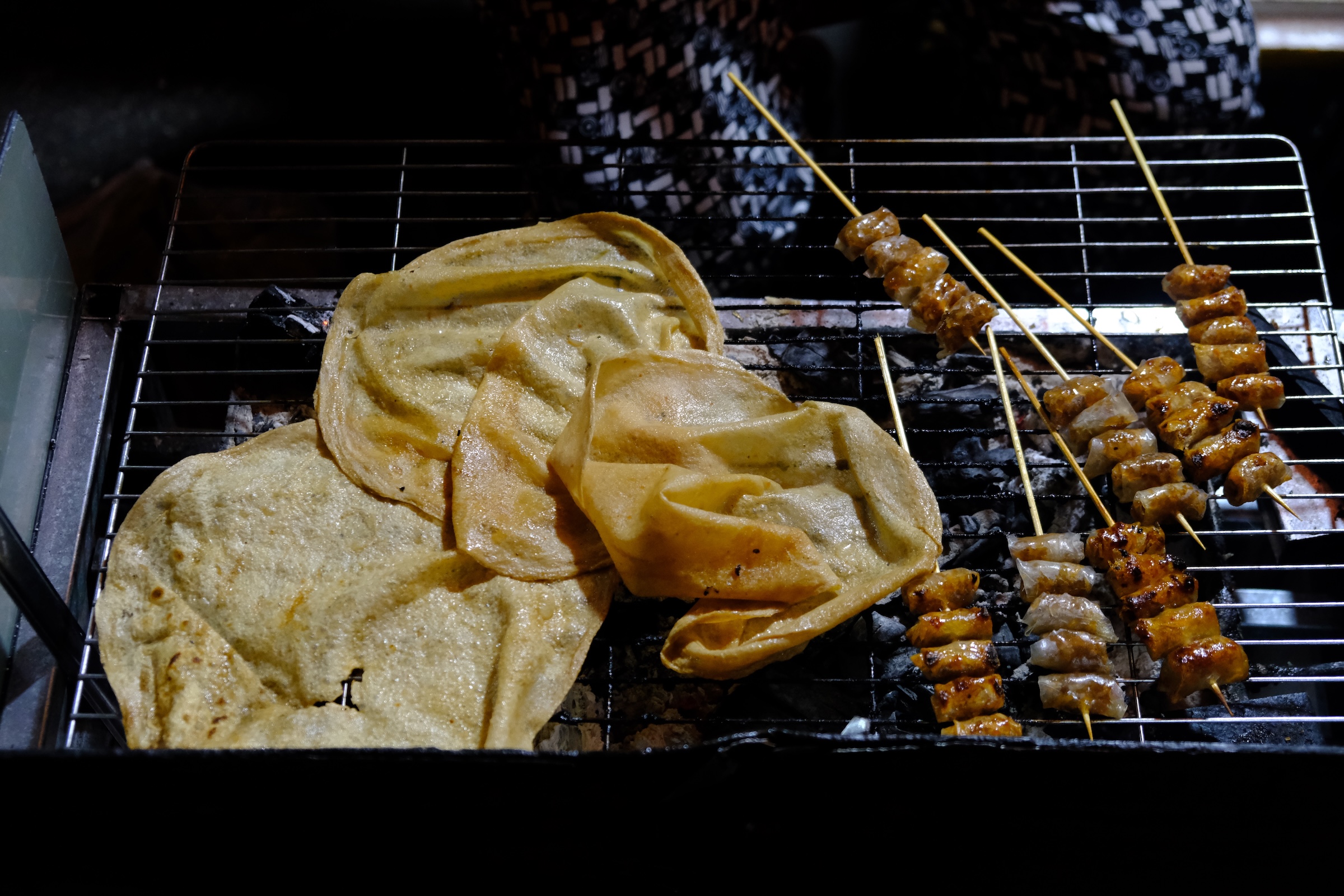 |
Grilled fish cakes and fried spring rolls
Day 2:
Breakfast with "bun ram":
Start your second day with "bun ram," a local noodle soup specialty. The main ingredient is small crabs from Tra O lagoon. The crabs are cleaned, ground, and their meat is extracted and cooked with spices. The resulting broth has a distinct sweetness, requiring only a garnish of herbs. Unlike other crab noodle soups, "bun ram" has minimal additions, preserving the pure flavor and aroma of the crab meat. It is served with fresh herbs and rice paper. First-time eaters might find the crab flavor unfamiliar, but the herbs balance the taste. A bowl costs between 15,000 and 20,000 VND.
Visiting the Twin Towers:
After breakfast, visit the Twin Towers, a Cham architectural structure located in the city center, built in the 12th century. Also known as Hung Thanh Towers, they are situated at the corner of Tran Hung Dao Street. The towers are one of the eight remaining Cham tower clusters in Binh Dinh (new Gia Lai).
The complex consists of two towers, the larger one standing about 25 m tall and the smaller one 23 m. Both have main entrances facing south. Constructed from baked bricks, each tower has three parts: a base, a square body, and a vaulted top. The structures underwent restoration in 1991.
Quy Nhon ExploraScience:
The Quy Nhon ExploraScience, located about 10 km from the city center within the Ghenh Rang Science Urban Area, is a unique destination. Founded by the Institute for Advanced Study in Mathematics and the "Rencontres du Vietnam" association, it is the first popular science center in Vietnam combining research, education, and experiential tourism.
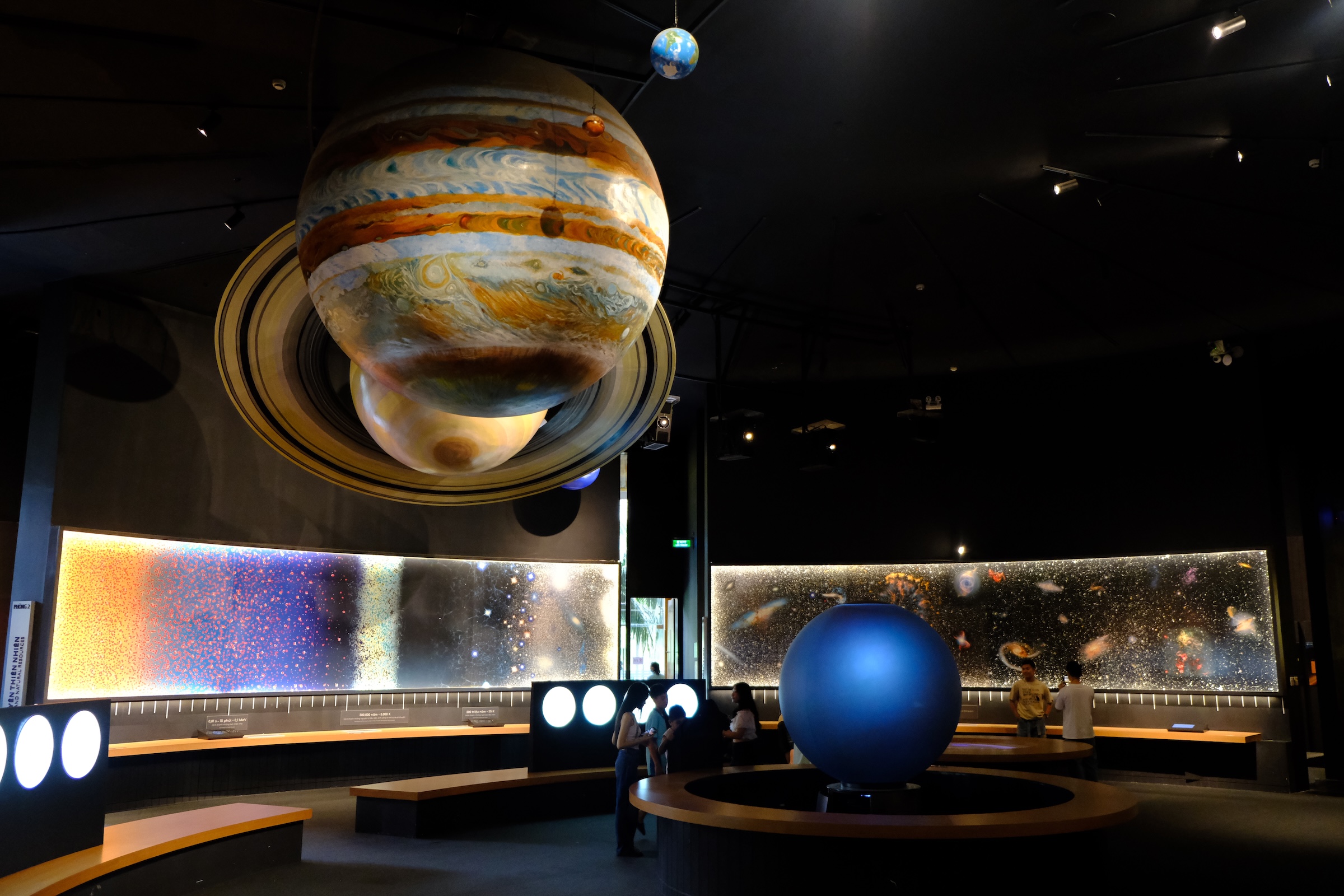 |
A simulation of the solar system. Photo: Bich Phuong
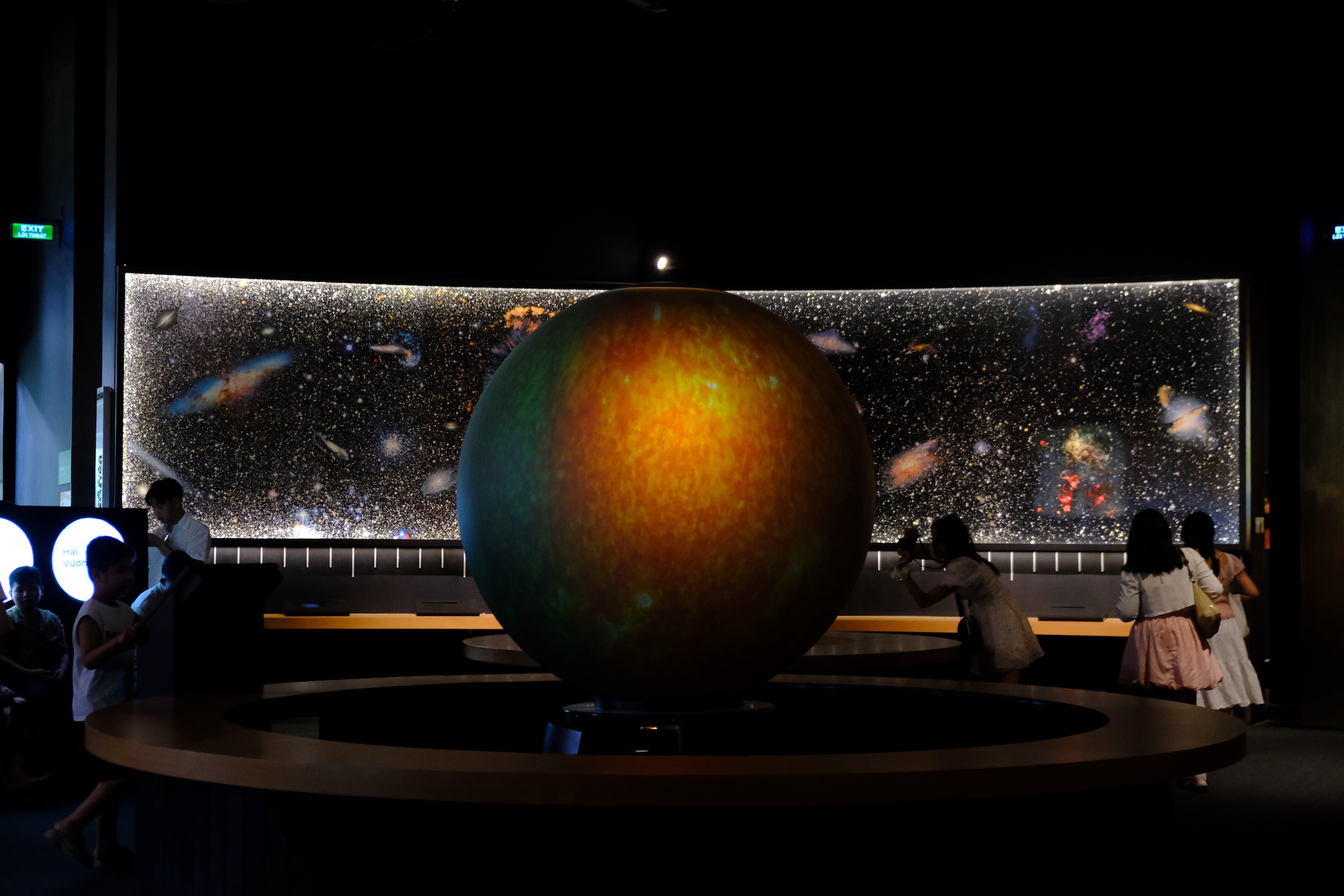 |
A simulation of the solar system. Photo: Bich Phuong
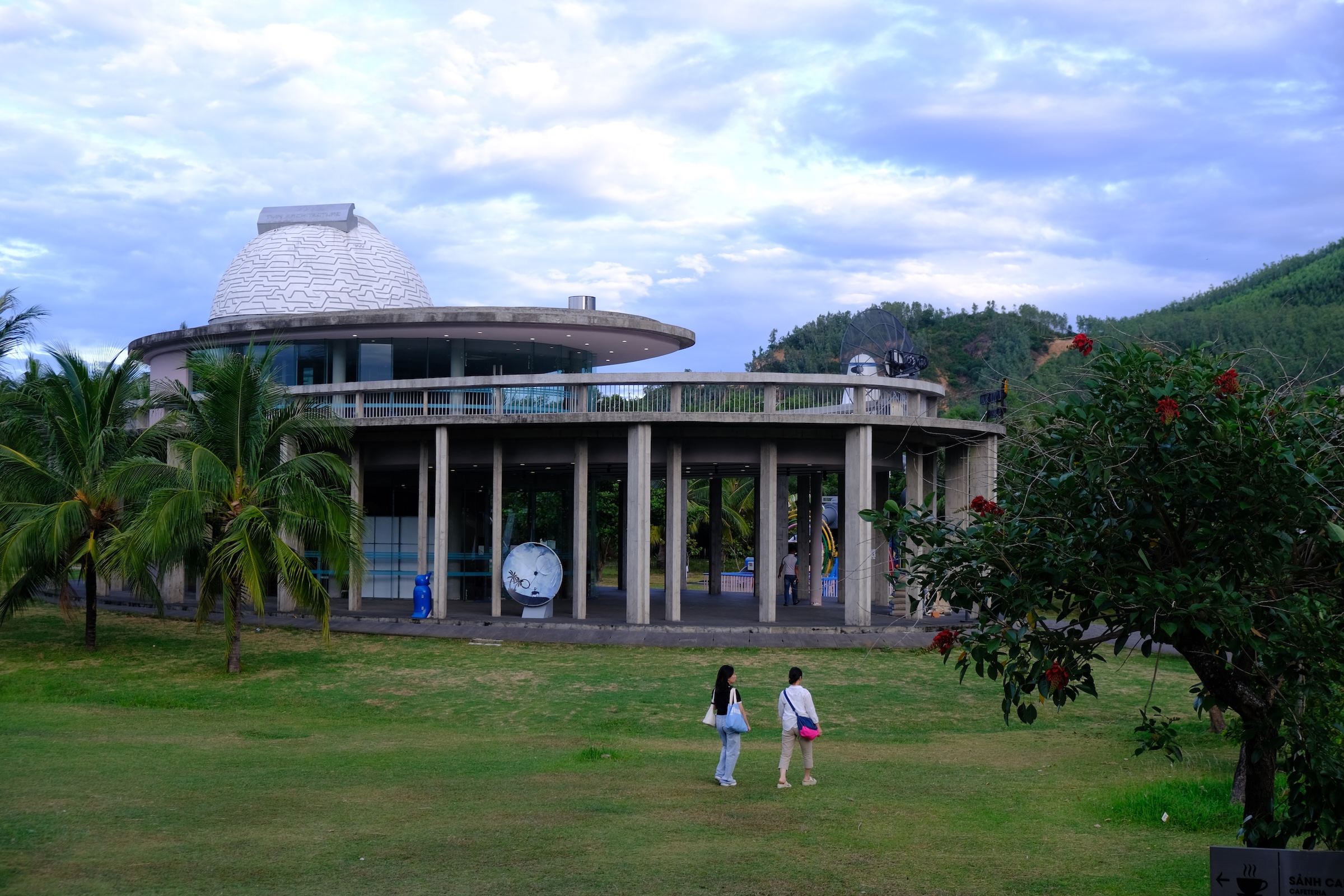 |
The grounds of Quy Nhon ExploraScience, with the astronomical observatory in the distance. Photo: Bich Phuong
The center's interior features an open design, encouraging visitors to interact directly with exhibits on physics, astronomy, and biology. Admission is 120,000 VND, including a science film screening; without the film, it's 90,000 VND.
A highlight is the planetarium, offering an immersive journey through planets and galaxies with realistic visuals and sound. There's also an astronomical observatory with a large optical telescope, open to the public on Wednesday and Saturday evenings with limited capacity.
Lunch with "banh xeo tom nhay":
The dish's name, "jumping shrimp pancake," comes from the fresh, live shrimp used in its preparation. On a hot stove, the chef pours batter onto a greased pan, adding the live shrimp. Bean sprouts and onions are then added. The batter, made from rice flour, turmeric, and coconut milk, gives the pancake a characteristic yellow color and creamy flavor. Each pancake contains 2-3 small but meaty shrimp. Besides shrimp, you can choose squid, beef, or egg fillings.
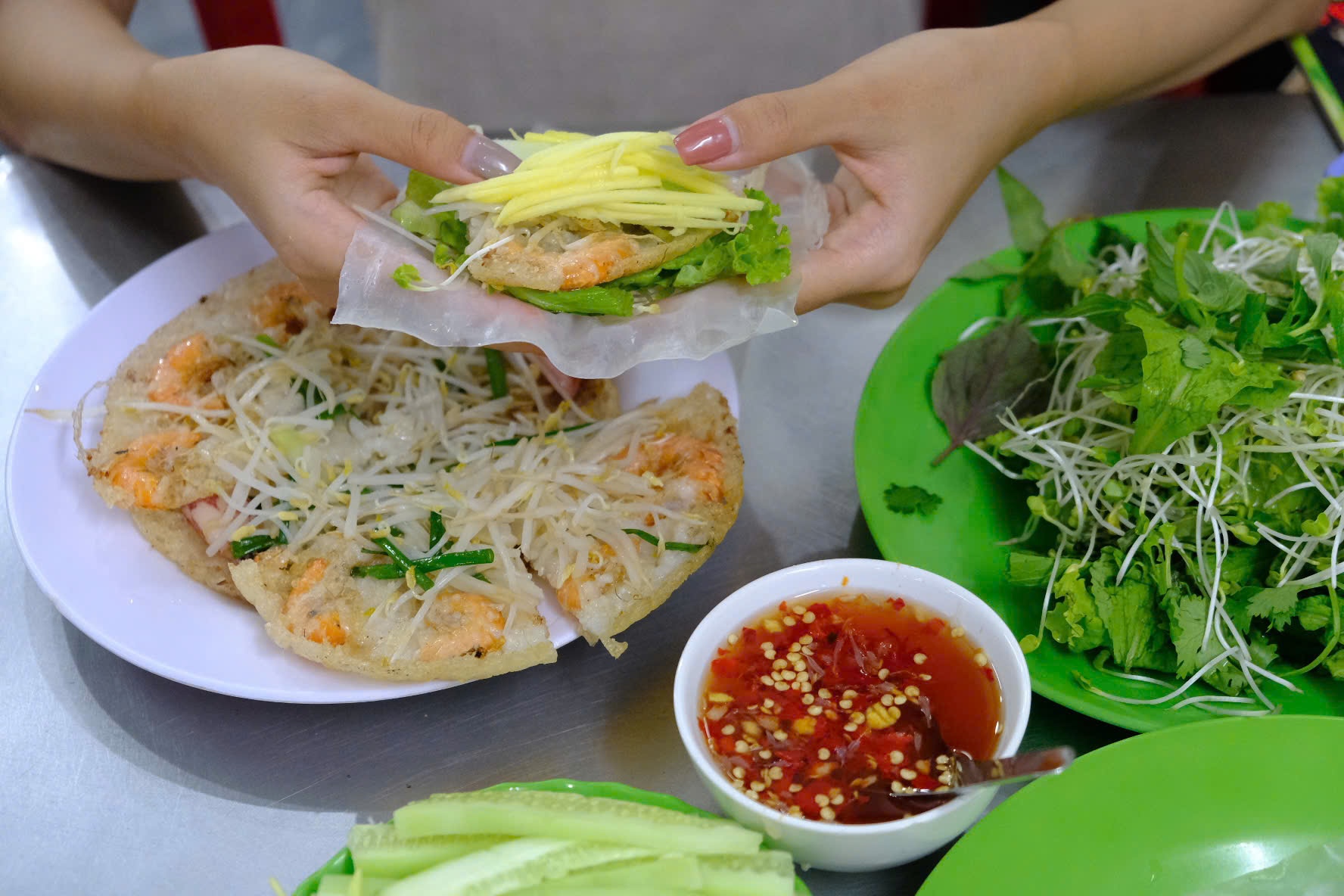 |
Jumping shrimp pancake wrapped in rice paper. Photo: Bich Phuong
In central Quy Nhon, numerous places sell "banh xeo tom nhay," priced from 20,000 to 35,000 VND each. Some recommended spots include Ba Nam My Cang, Gia Vy, Ong Hung, and Anh Vu.
Visiting Nhon Ly fishing village:
Nhon Ly fishing village, located on the Phuong Mai peninsula about 20 km northeast of Quy Nhon, is known for its colorful murals. The idea to decorate the village originated with Monk Giac Ty, the abbot of Ngoc Hoa Pagoda. Since 5/2023, the murals have been refreshed, depicting themes of flora, fauna, and images of local life such as fishing nets, sailboats, sharks, dolphins, and sea turtles.
After exploring the village, head to Phu Cat Airport, about 35 km away and a 50-minute taxi ride.
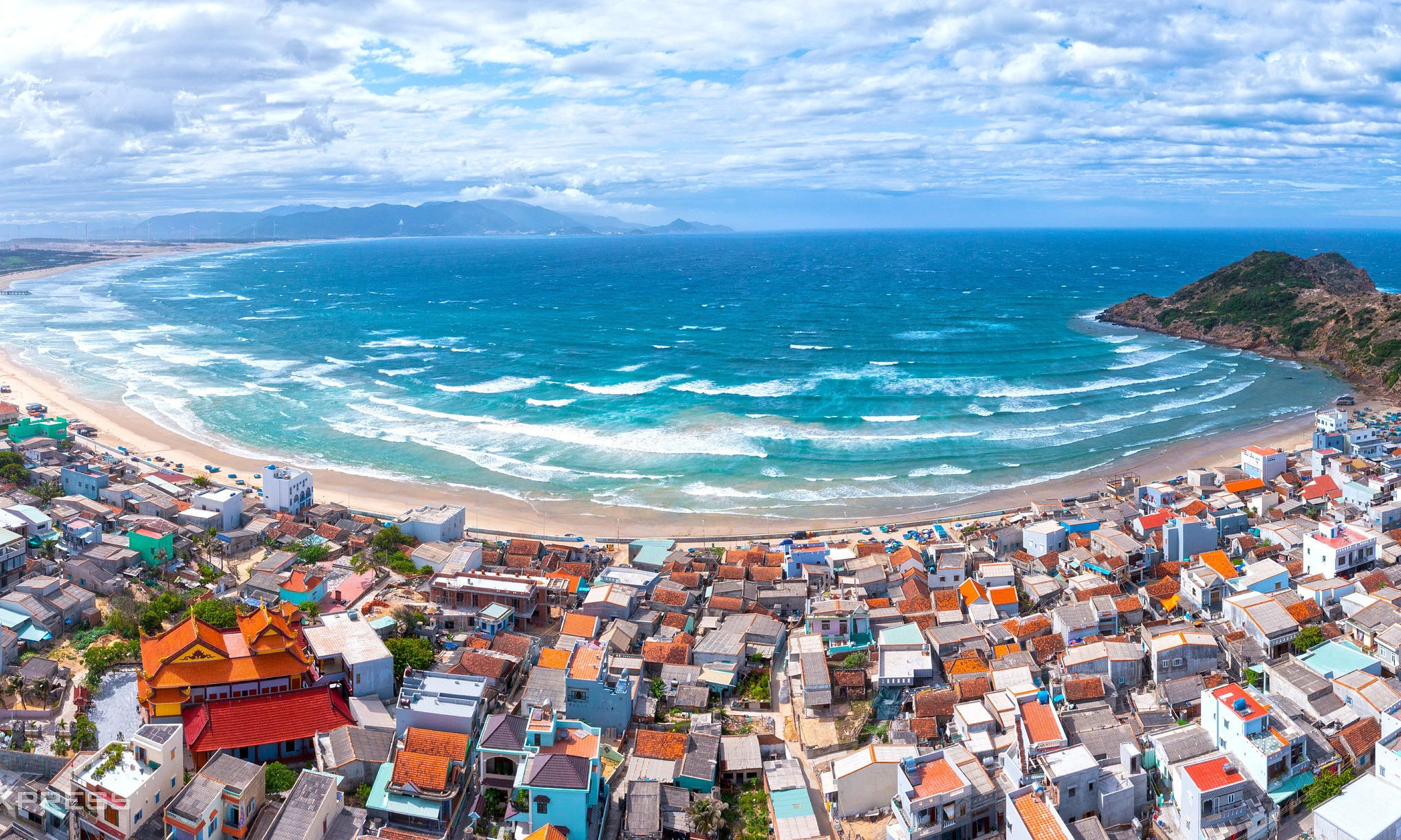 |
Nhon Ly fishing village from above. Photo: Nguyen Dung
Alternative itinerary:
Exploring Ky Co and Eo Gio:
Instead of the Twin Towers and Nhon Ly fishing village, consider a trip to Ky Co and Eo Gio. Ky Co, located 25 km from the city center, is often referred to as the "Maldives of Vietnam," with its pristine beaches and turquoise waters. You can reach Ky Co by boat from Eo Gio or by road, then take a boat tour to Eo Gio or snorkeling spots.
Bich Phuong










